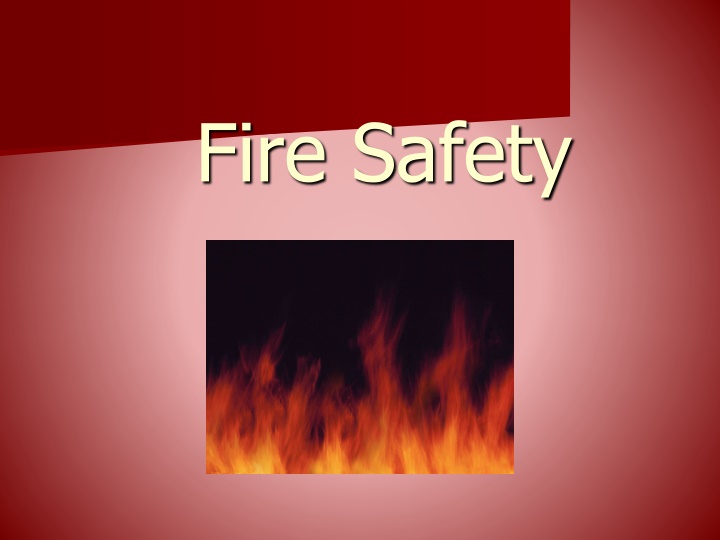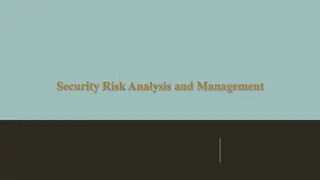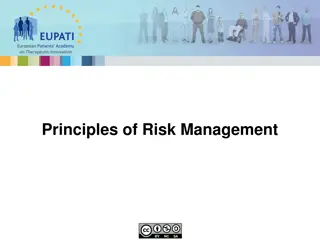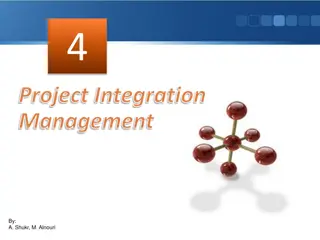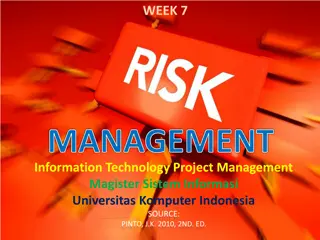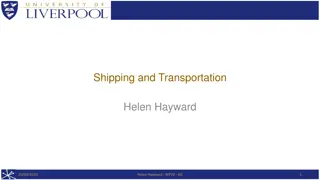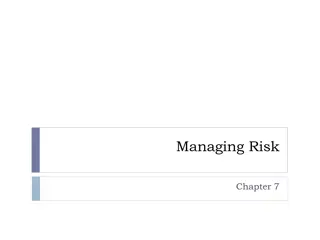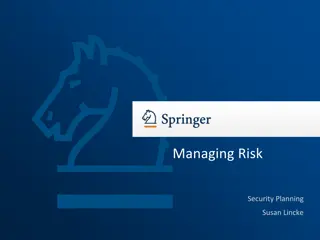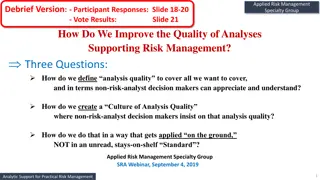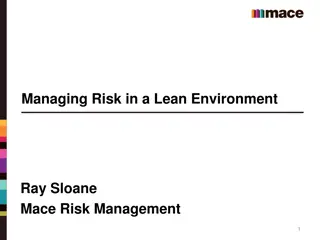Project Risk Management Events and Integration
This content delves into the processes and importance of project risk management, including planning, identification, analysis, response planning, and monitoring. It emphasizes the objectives of project risk management to optimize project success by managing both positive and negative risks effectively. Additionally, the integration of risk with other project management functions is explored, highlighting the impact of risks on project objectives and the need to consider individual project risks along with overall project risk.
Download Presentation

Please find below an Image/Link to download the presentation.
The content on the website is provided AS IS for your information and personal use only. It may not be sold, licensed, or shared on other websites without obtaining consent from the author.If you encounter any issues during the download, it is possible that the publisher has removed the file from their server.
You are allowed to download the files provided on this website for personal or commercial use, subject to the condition that they are used lawfully. All files are the property of their respective owners.
The content on the website is provided AS IS for your information and personal use only. It may not be sold, licensed, or shared on other websites without obtaining consent from the author.
E N D
Presentation Transcript
Chemistry of Fire Fire burns because there are three elements present 1. Fuel 2. Heat 3. Oxygen By removing any one element a fire can not occur, or a fire will not be able to sustain combustion
Fire Prevention Practices Keep passage ways and exits clear Ensure fire extinguishers and fire alarm pull stations are accessible at all times Place trash in proper receptacles Ensure that fire doors are not blocked open
Plan for Fire Emergencies Read & understand the fire evacuation plan for your area Know the location of at least two emergency exits Know the location of fire alarm pull stations and fire extinguishers Take part in fire drills
In Case of a Fire Remain calm ..NEVER shout FIRE Proceed safely to nearest fire exit Feel surfaces of doors before opening Crawl to exit if smoke is present in area Follow instructions of Fire Department Remember R.A.C.E. and P.A.S.S.
R.A.C.E. for Fire Safety R escue those in immediate danger A ctivate alarm (Dial 2000) pull alarm C ontain the fire (close doors) E xtinguish the fire
P.A.S.S. for Fire Extinguisher Use Pull the pin Aim at base of the fire Squeeze the handles together Sweep from side to side
Classes of Fire Class A- Ordinary combustibles such as wood, paper, and trash Class B- Flammable liquids such as gasoline, oil, and alcohol Class C- Electrical equipment such as wiring and appliances The hospital uses an ABC class extinguisher in the healthcare environment.
Tobacco Free Campus Medical Center Hospital prohibits smoking or tobacco product use while on any MCH Campus. Campus means all properties leased or owned in any location by MCH. This includes the interior of all buildings, parking lots, parked cars, garages and sidewalks.
